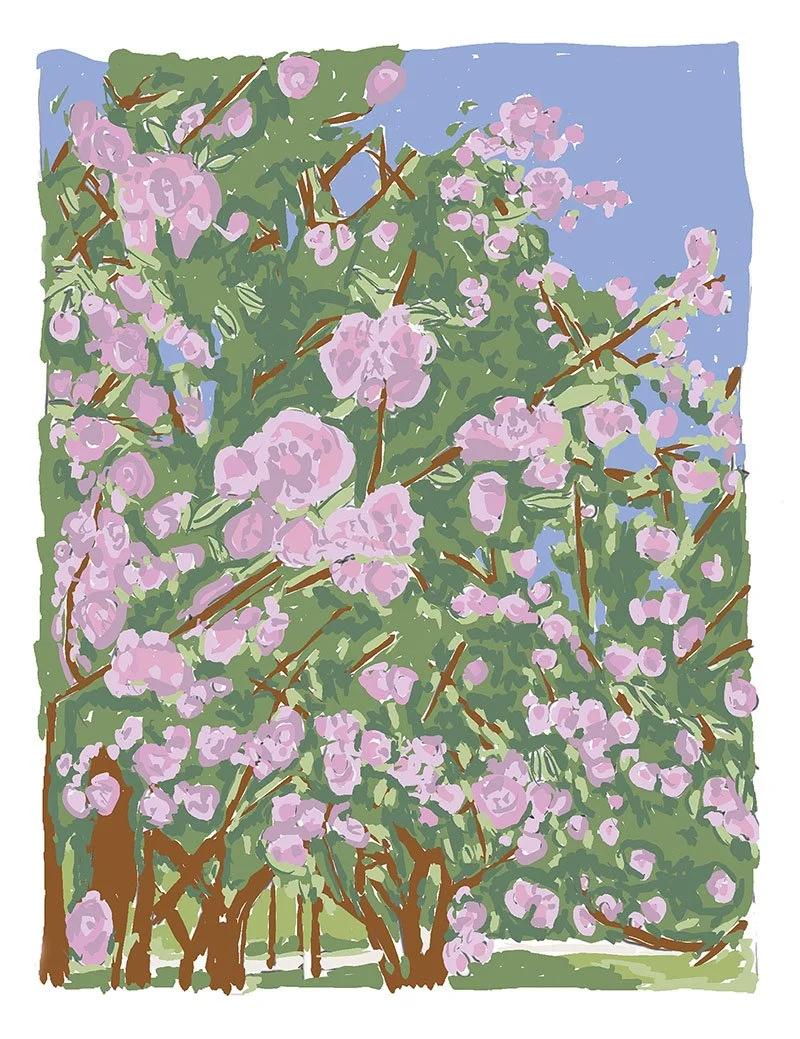ANA MOSSERI
Ana Mosseri: The Persistence of Blossom In Cerezos en Flor: iPad Drawings, Colombian artist Ana Mosseri (b. 1969) invites us into a space that transcends the geographic and aesthetic boundaries of her national context.
Her cherry blossoms, lush and abundant, fall like a poetic drizzle at the cusp of summer—an evocation of life’s luminous but fleeting intervals.
Beneath their delicacy lies quiet defiance: a refusal to mirror the insular, often somber tone of mainstream Colombian art. Mosseri treats transience not as loss but as transformation. Her works are less landscapes than parajes—compressed visions that center emotional and atmospheric resonance over geographic specificity. Lacking horizons, stripped of grand vistas, they focus the gaze inward, privileging stillness and presence over spectacle. Her embrace of beauty is deliberate and provocative. By choosing the cherry blossom—an icon of excess, theatricality, and impermanence—Mosseri reclaims aesthetic pleasure as a serious intellectual act. Like Damien Hirst, who described the blossoms as “show-offs,” she revels in their lushness, but filters it through restraint, clarity, and painterly precision. Her four-part process—photography, digital drawing on iPad, large-format printing, and final translation to canvas—fuses tradition and technology. These works aren’t nostalgic for painting’s past, but rather chart new territory, extending the medium through contemporary tools and sensibilities. What results is a body of work that’s visually tender yet conceptually rigorous. A childlike candor runs through her images, softening their sophistication and inviting the viewer into an open, sincere encounter. Hers is not a practice of grief or fatalism, but one of cyclical renewal—a visual meditation on life, death, and the spaces in between. In a cultural landscape where art often grapples with trauma, Mosseri offers an alternative: a vision that is unafraid of beauty, attuned to time, and rooted in the persistent bloom of the ephemeral.







